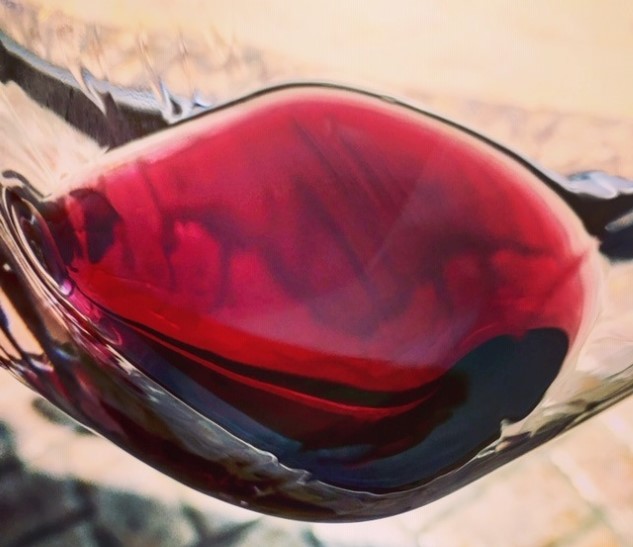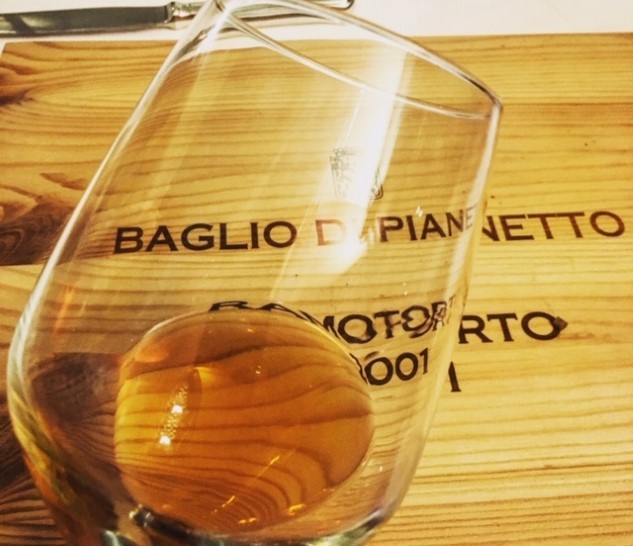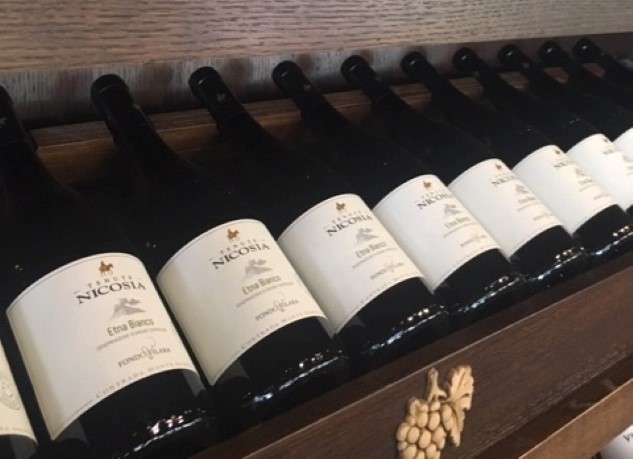Sicilian Wine: Ecologically Friendly, Totally Awesome
Photos by Amy Glynn
The boat putters over the shallow lagoons, past some quaintly gloomy-looking salt pans and away from the Sergio Leone mise en scene that is Marsala, pausing to idle stutteringly on the edge of the nearby island of San Pantaleo and what was once the city of Mozia. There’s an archaeological site at the edge of the water. The guy steering the boat says they’re not sure exactly what the building’s purpose had been, but that it was definitely Phoenician and probably from the 8th century BCE. Behind the ruin, a gridded expanse of foliage stretches into the distance-they’re growing Grillo, one of the signature varietals of Sicily, a yellow grape historically used to make the oxidative fortified wine called Marsala, and increasingly in vogue today as a youthful, aromatic white.
The largest island in the Mediterranean has historically been one of the more intense cultural crossroads in the western hemisphere. Even by the diversity standards of Italy, where there are more than 30 native languages, Sicily is a rich mixture of cultural influences, from Phoenician, Carthaginian and Greek to Norman, Arab, Albanian and Aragonese. The result is a dizzyingly complex culture, rich culinary heritage, and absolutely amazing wine.
Sicily is like Greece in that it manages to fly low on the wine radar despite the fact that people had already been working vines there for 3,000 years when the first grapes were squished in Napa Valley. This situation becomes a feedback loop: When a region is less well-known for whatever reason, it forces prices down. Low prices, in some cases very wrongly, tend to telegraph lower quality. That perception leads people to ignore the wine, resulting in continued low visibility. I almost hate to do this, because … well, “more for me.” But here goes: Some of the absolute best wine you’re not aware of is being made right now in Sicily. Sicilian wine, with its emphasis on indigenous and ancient grapes, is the antidote to Bored Palate Syndrome. Much of this Dionysian goodness is available at fire sale prices, considering the quality. And yes, you might have to work a little bit to find it in the States, because Sicilian winemakers have not found it entirely simple to break into a market that’s thoroughly dominated by California.
Here’s the thumbnail “Stuff to Know About Sicilian Wine” breakdown:
Sicily has one of the greatest concentrations of organic grapes in Italy, and sustainable winemaking practices are the norm. In a week of wine tasting around the island I don’t believe I encountered any producers who weren’t utilizing organic practices. So if that’s something you care about (and hey, it should be), know that if the bottle in your hand was produced in Sicily, even if you have trouble translating the label, the odds that you’re holding cleanly produced, environmentally conscious juice are excellent to overwhelming.
Sicily is a land of extremes-wine is farmed at sea level, on the snowy slopes of Mount Etna and everywhere in between. Rainfall is scant in the southeast and heavy in the mountains. Volcanic activity means diverse and interesting geology (not to mention ambient heat from an active crater). Wines made there are similarly diverse.
In the past, Sicily was something of an undistinguished, bulk-wine-focused region. It’s a reputation the current generation of winemakers have been eager to shed. The result is an innovation-forward winemaking culture interested in experimentation and style. Sicily is similar to California in that they tend to be most interested in varietal expression versus elegant blends. However, they wisely remain focused on their own indigenous, traditional varietals, so however style-conscious these wines might be, there is a certain cleaving to tradition that gives their wines grounding and framework and context even when a producer also works with international (read: French) grapes like Syrah (pretty common, and PS winemakers will tell you “Syrah” comes from “Sirocco” and indicates the grape blew to Sicily from its homeland in Syria. This is apocryphal), Merlot (occasional) or Viognier (I tasted one). Winemakers toying with combinations of these are finding themselves in very interesting terrain-look out for Baglio di Pianetto, who were pioneers in blending French varietals with Sicilian ones and whose Nero d’Avola and Merlot blend “Ramione” is outstanding, as is their super sleek Viognier. Or Alessandro di Camporeale, who are having a stellar time with a Syrah called “Kaid.” These folks are more exception than rule from what I was able to tell, though-in general Sicilian producers seem dedicated to the island’s indigenous grapes. Which is fine because they have an impressive variety of good ones.
Here’s a breakdown of the major Sicilian varietals, with tips on specific examples to look for.
Catarratto: The most widely planted white grape in Sicily, and in fact all of Italy despite the fact that Sicily is its only home. It makes soft, rounded dry white wines, low in tannin and moderate in acids. A grape to look for if you tend to like Pinot Blanc, Rhone whites, Viognier or Grechetto. Typical notes include peaches, green apple, lemon and lime, honey and wildflowers.
-

-

-

-

-

-

-

-

-

-

-

-

-

-

-

-

-

-

-

-

-

-

-

-

-

-

-

-

-

-

-

-

-

-

-

-

-

-

-

-











































